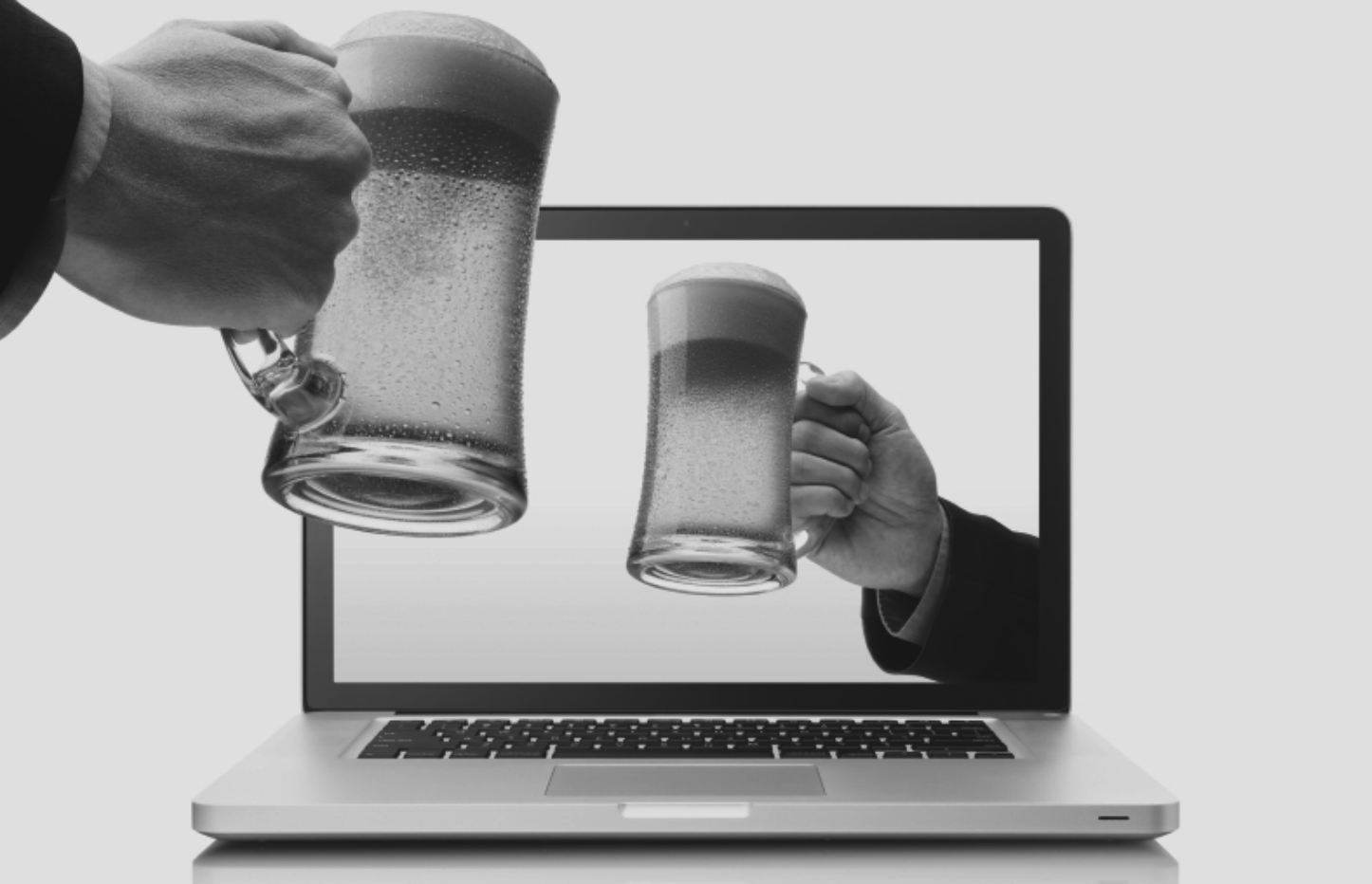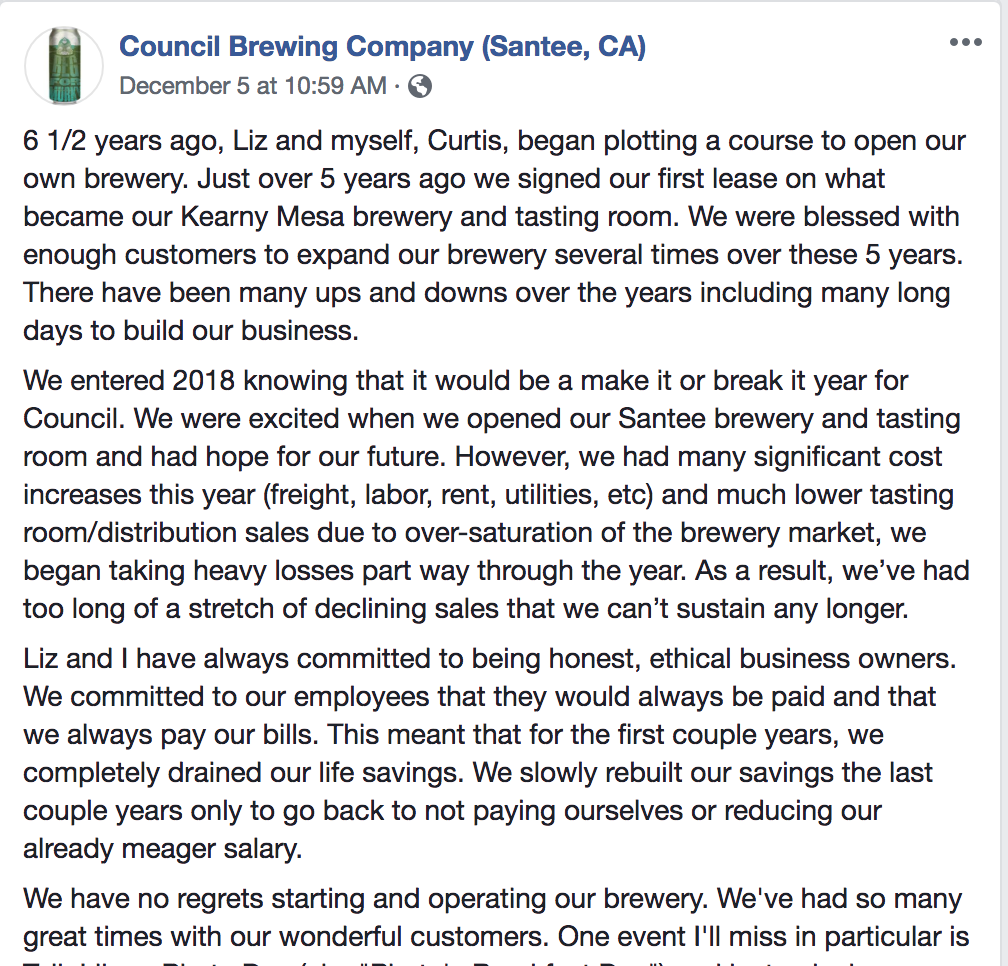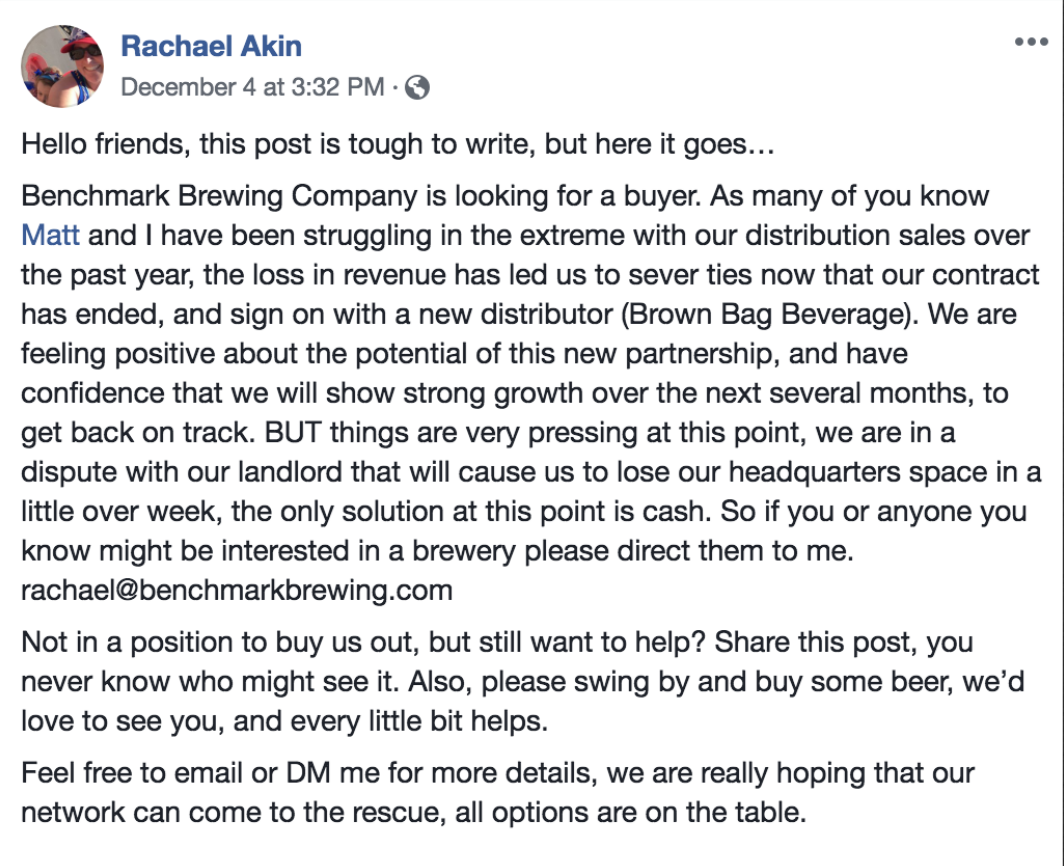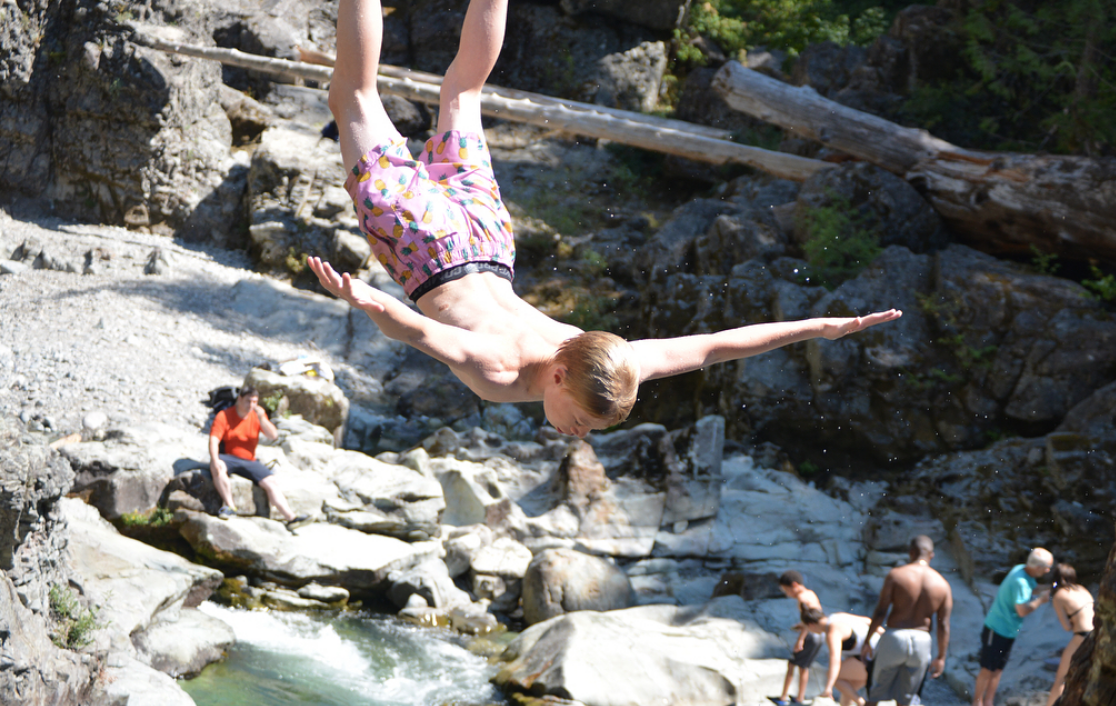This week the San Diego craft beer community was hit with the news that two well-respected breweries will likely be closing down this month. Council Brewing (Kearny Mesa and Santee) and Benchmark Brewing (Grantville & Bay Park) both put out statements on Facebook. Council wrote a heart-breaking post thanking their patrons for their support and outlining the tough year they had business-wise.
While Benchmark’s announcement wasn’t that they are closing, they are in need of a buyer/influx of cash to save them from shuttering their doors. Owner, Rachael Akin, made this public post…
Pivot!
As I was writing this post, I was also perusing the news coming out about these two breweries and I saw a piece published today, by Ian Anderson for the Reader , that was pretty close to what I was going to ruminate on but instead of starting over on my blog piece, I got to thinking about one quote that stuck out of his well-written article…
“The internet is ruining beer,” she (Rachel from Benchmark) says, citing social beer review apps such as Untappd, where user earn added cachet for every new beer they rate. “People are seeking out very specific things that are only available very specific places,” Akin adds, noting that beer buyers have followed suit, consistently expecting breweries to come up with the next new hit. “You can’t just make beer that’s good to drink every day.”
Anderson writes, “She points to the proliferation of social media culture as contributing to the decline in business, as capricious fans spur each other to bypass familiar brews, regardless of quality, to chase beers that are new and hard to get.”
Is the internet ruining beer? Rachel makes an interesting and eye-opening point. Her assessment of people’s desire to find the next hot, new thing can be seen not only in the beer industry but across other industries too with similar, unintended negative effects.
Thank You, Instagram
Nature has taken a beating because of Instagram. Whether it’s people posting perfect pics of a secret beach they found (and often geotagging the spot too) or about an unnamed hike through a natural park, many beautiful and often environmentally sensitive locations are being blown up to the detriment of the locals and the environment itself. People want to discover the next hot spot or secret locale, usually with little regard for the impact that sudden fame will have on the physical location. From parking to bathrooms to trash removal, a sudden influx of people, many of whom are not accustomed to “leave no trace” mentality of nature lovers, can be catastrophic to a once serene landscape.
This plays out in restaurants too. One might think that there is nothing better than getting your restaurant on a popular “top ten” or “best of” list. After all, who doesn’t want a bunch of new, hungry customers? Recently, Thrillist posted an article by a writer that was entitled, “I Found the Best Burger Place in America. And Then I Killed It.” He wrote about how he named a small Portland burger joint as having the best cheeseburger in the country and five months later it shut down with the owner lamenting that being number on this list was “the worst thing that ever happened” to the little restaurant. It’s a really interesting article so I encourage you to hit on the link above, but the gist was the owner said his little restaurant couldn’t handle the influx of new patrons. That people were waiting five hours in line for this burger, that his staff couldn’t handle the busier pace and the service suffered and in turn, the opinions going out the door were less than stellar.
Is this all part of the same problem? People’s hunger for lists, best-ofs, secret spots and finding the next hot craft beer is satiated by social media and the internet. So while the internet may not be totally ruining beer, it absolutely has changed the way that people consume and think about it.
A Little of This, A Little of That
What’s the answer though? Rate beer isn’t shutting down anytime soon and Instagram travel bloggers aren’t going anywhere. How do we as an industry change with the times and use the internet for all of its benefits vs. fall victim to its dark side? How can consumers not fall prey to the sweet song of the internet’s “best of” lists and hottest new trend?
There are no clear answers to this conundrum that many San Diego breweries are facing. Maybe as brewers, we have to try our best to stay relevant in the ever-changing beer-scape. To continue making the best beer we can and marketing it to not only craft beer fans but people outside the craft beer-bubble. It means changing with the times while still staying true to our roots and identity as a brewery. Running a brewery is expensive and growing that brand is even more expensive. It’s probably no coincidence that both Council and Benchmark opened new locations recently. While new locations are a way to increase revenue, they also increase overhead and labor and are expensive to build out. Both breweries also spoke of the over-saturation of the San Diego craft beer market as driving factors in their poor distribution sales. Expanded distribution tends to be a double-edged sword. Yes, it’s exciting that your beer gets in front of a bunch of new consumers but it costs a lot of money to have someone distribute your beer for you (or to self-distribute, those refrigerated trucks aren’t cheap) so then you have to produce and hopefully sell a lot more beer just to break even.
What can we do, as consumers, to support our favorite breweries? Maybe take Rachel’s words to heart and while it’s exciting to seek out the next new beer or brewery, if we have a favorite, make sure they are on our rotation more often and that we purchase their beer in stores. As much fun as it is when a new brewery opens its doors, in today’s San Diego craft beer market it also means an increase in competition for the other breweries out there. Not that competition is bad in a marketplace, but at some point there reaches a saturation point where it becomes hard for the industry to sustain itself. While one can argue whether or not San Diego has truly reached that saturation point yet, it remains true that if we want our favorite breweries to stick around, we need to buy their beer, plain and simple.





I’m sorry to hear about the struggles of both Council as ne Groundswell as I have frequented both breweries and enjoyed their products and friendly service, but I don’t think the internet has much to do with their predicament. You mentioned the main culprit several times in your article: oversaturation. I believe to be successful you have to 1. Be highly successful in marketing and distributing while meeting production requirements. 2. Have your beers stick out among the crowd by being different. 3. Be on a highly desirable location. Both breweries make great beer, but are relatively hard to find around town. These days your beer has to be readily available in brewpubs, teahouses, and restaurants throughout the county (i.e. Thorn, Modern Times, Belching Beaver). While their brews are high quality, I’m not sure they offer anything that sets them apart from the competition in beer or brand. And while I love East county and have resided there all my life, it’s not exactly a craft beer hotspot like North Park or Miramar, or the beach communities. Many of the residents are still rooted in the quantity over quality philosophy and big beer, although I think this is slowly changing. The struggles of these businesses is troubling and I wish the best for the owners and employees.
Very well said. You make a lot of good points. Thanks for taking the time to comment!
I’ve been making the same comments about Untappd for years. These people are seeking beers for points and not because they like them. Nor are they taking the time to review the beer they drink. It’s like a rewards programs which does not add any value to the beer industry other then seeking places out.
Will there be a pendulum swing back, though, or will we call deeper into the Untapped/points for beer culture?